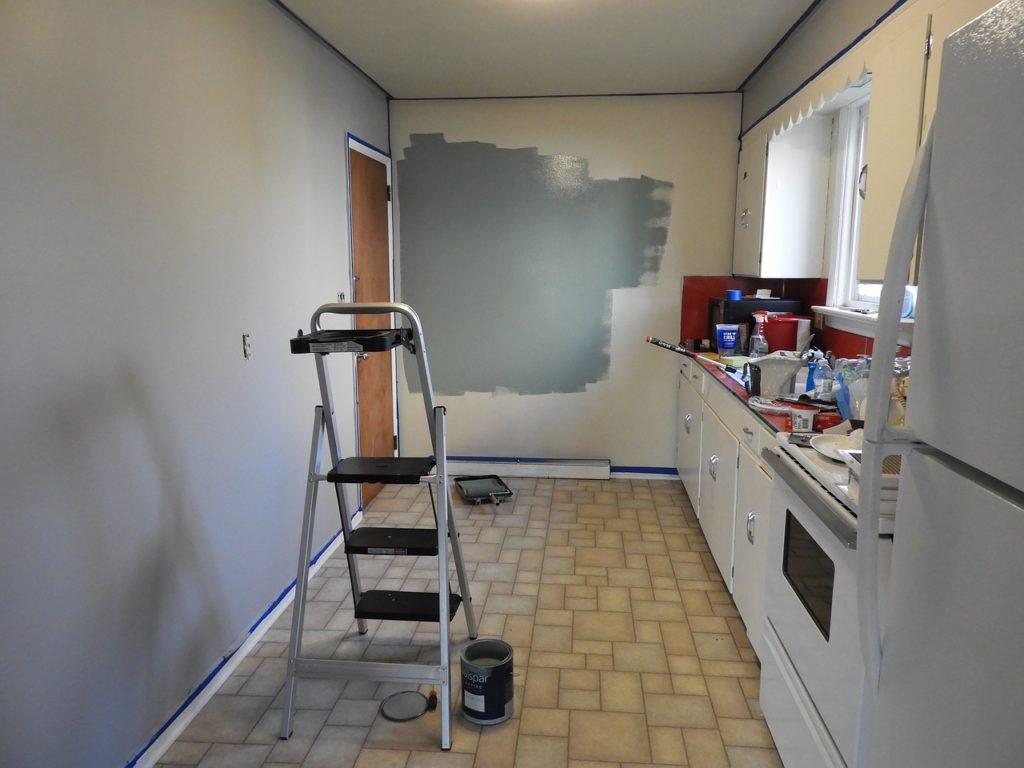Even if the rest of your house is done in neutrals, there’s a pretty good chance that your kids’ bedroom paint colors will be a little bit more vibrant. Kids spend a lot of time in their rooms, playing, reading, and sleeping, and they need to feel comfortable in their environment just as much as adults do.
Picking Paint Colors
Let your child help choose the colors for his or her room if you can.
Providing a few acceptable choices is one way to keep things from getting out of hand. Block requests for pepto bismol colored walls by allowing your little girl to choose between dusky rose, peony pink, or coral. Junior can pick forest or emerald green; not lime.
If you’re worried that the wrong color choice might hinder study time or prevent restful sleep, check out this article on color’s effect on emotions.
Or course, if you can stand your kid’s crazy color choices, go for it. You can always shut the door if company comes!
Unexpected Color Schemes for Boys’ Rooms

You’ll probably want to have at least one accent color in addition to the main wall color. Painting children’s rooms can be a lot of fun in this respect. While the rest of the house might demand a monochrome or adjacent color scheme, kid’s rooms are little more forgiving.
Combine icy blue with true orange for a fun and friendly boy’s room; red can work surprisingly well with green, as long as both are subdued (using bright versions of these colors together can look Christmasy).
If you crave a more traditional approach, combine the classic red, white, and blue for a theme he’s unlikely to outgrow. Khaki goes well with most colors and is a nice, neutral shade if you just can’t stomach brighter colors. In a teenager’s room, a subdued grayish purple combines well with black for an edgy look.
Fresh Picks for Girls’ Rooms

In a girl’s bedroom, pink, yellow, and lilac can combine for a fresh garden feel. You can also combine green with lavender. White is the perfect neutral accent color, and it always looks fresh and feminine. Pink is surprisingly versatile. It goes well with purple and looks equally attractive combined with orange. A triad of red, dark pink, and light pink is feminine but grown-up.
Don’t rule out blue for a girl’s room, either. Pastel shades go well with yellow or white. Teal is a strong, personality-filled alternative to true blues.
Unisex Rooms
If you have a boy and a girl sharing a room, you’ll want to avoid making it look too masculine or feminine. Yellow and green are both unisex colors and can be combined for a clean, citrusy look. Red and orange are also gender neutral choices.
Specialty Paints
One fun idea in children’s rooms is to create a message center using specialty paint. Chalkboard paint lets Jane draw right on the wall, and magnetic paint will allow Junior to hang his art with refrigerator magnets.
Safety First
Low VOC paints are pretty standard these days, but children are especially susceptible to chemicals. Painting kids rooms with no VOC paints is the safest way to go.
Remember to keep your overall decorating plan in mind when choosing kids bedroom paint colors (and themes!). If you don’t mind redecorating frequently, you can allow bolder choices. If you only enjoy painting every ten years or so, choose more conservative shades and let your accessories do the talking.


